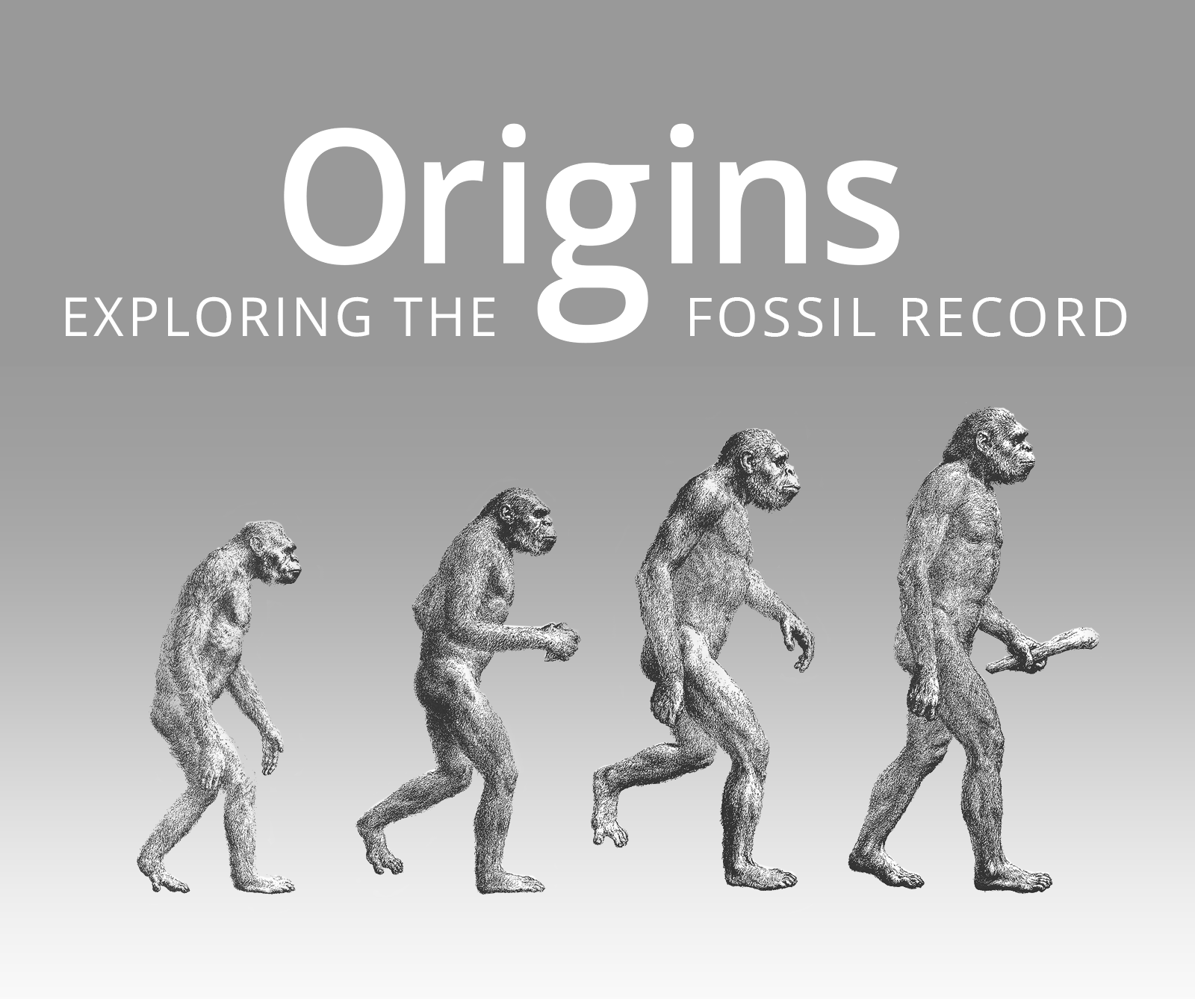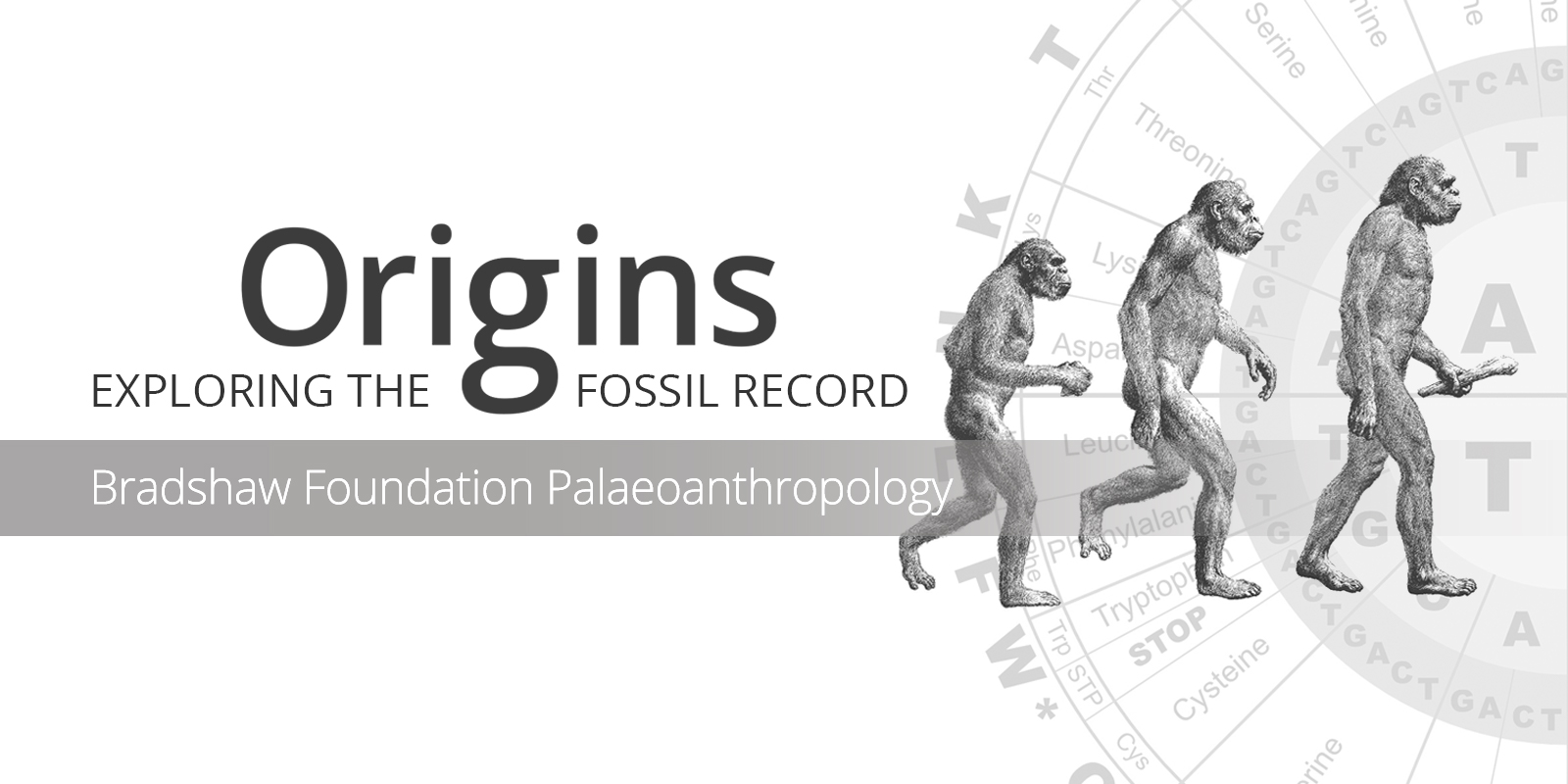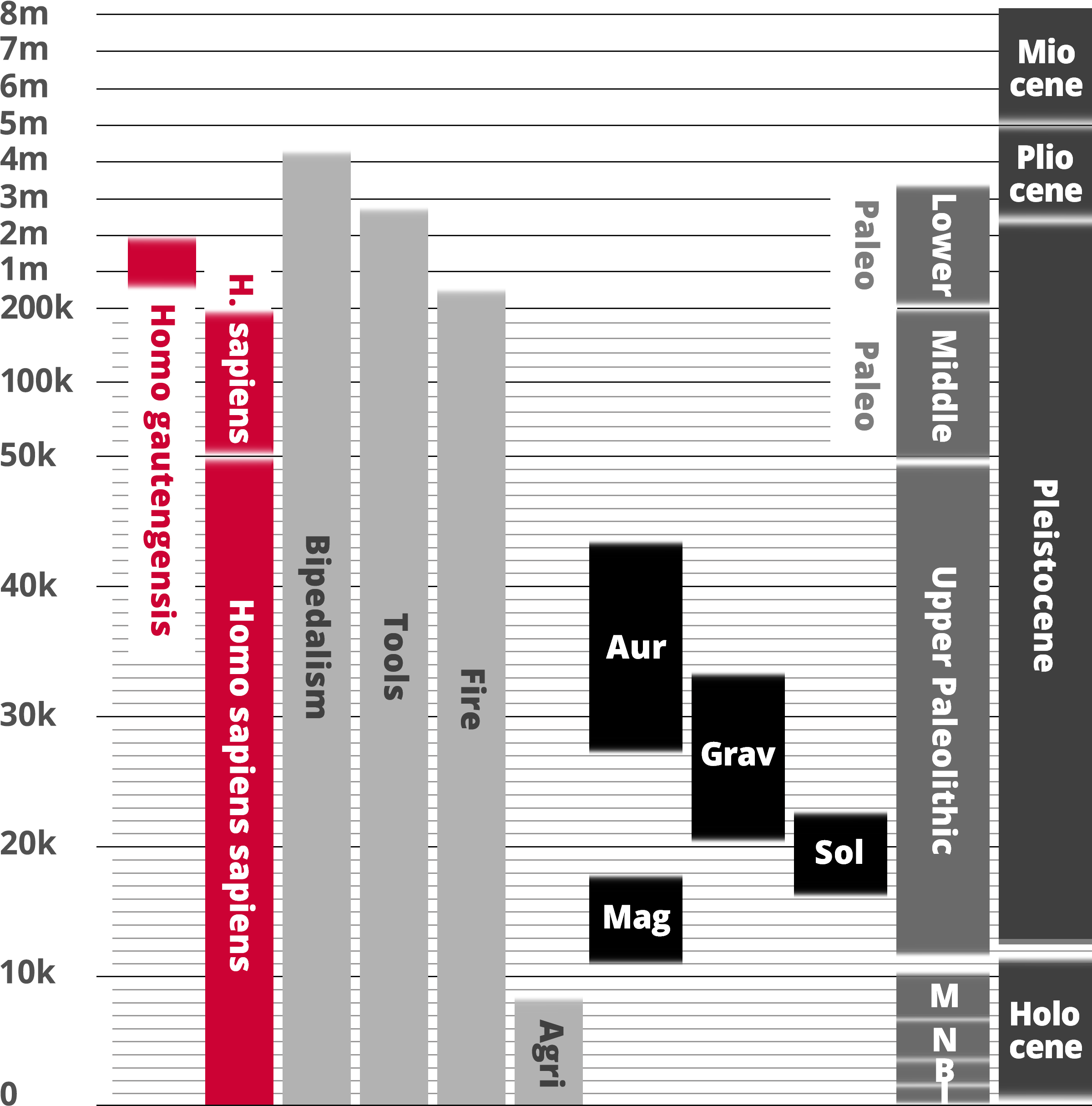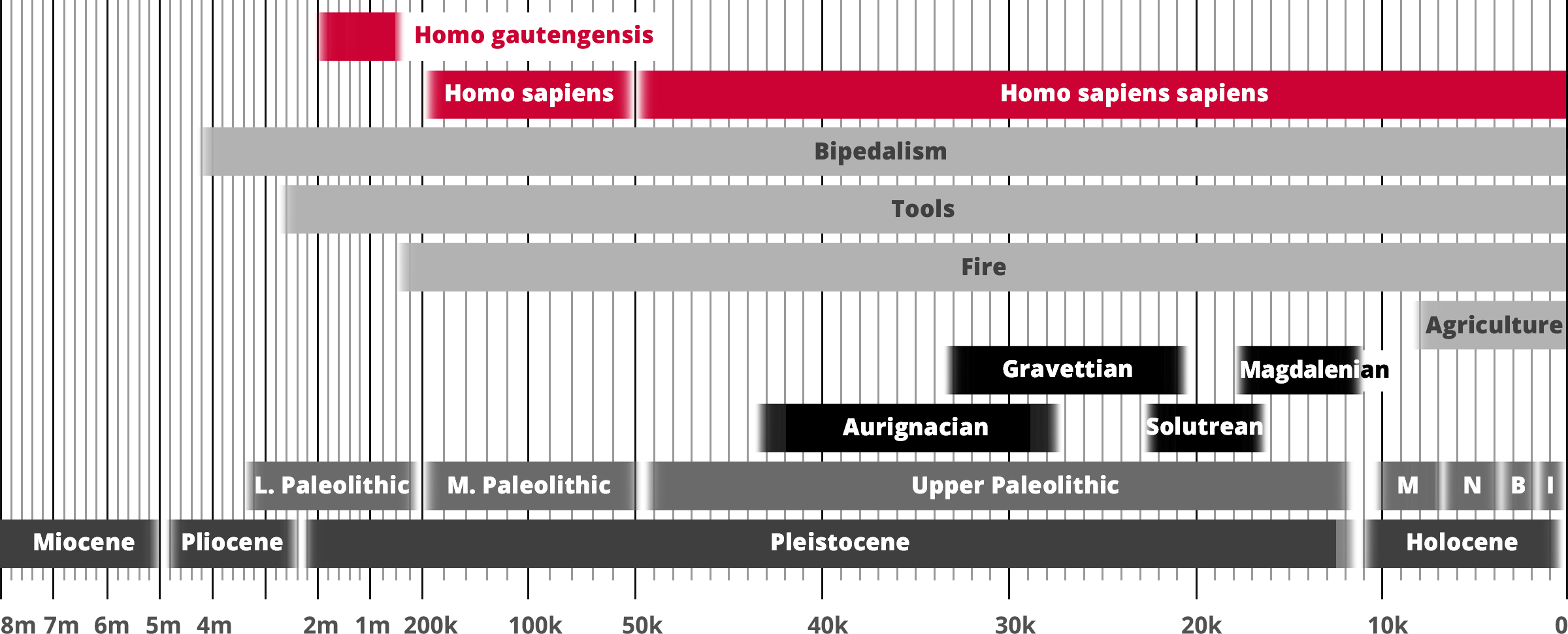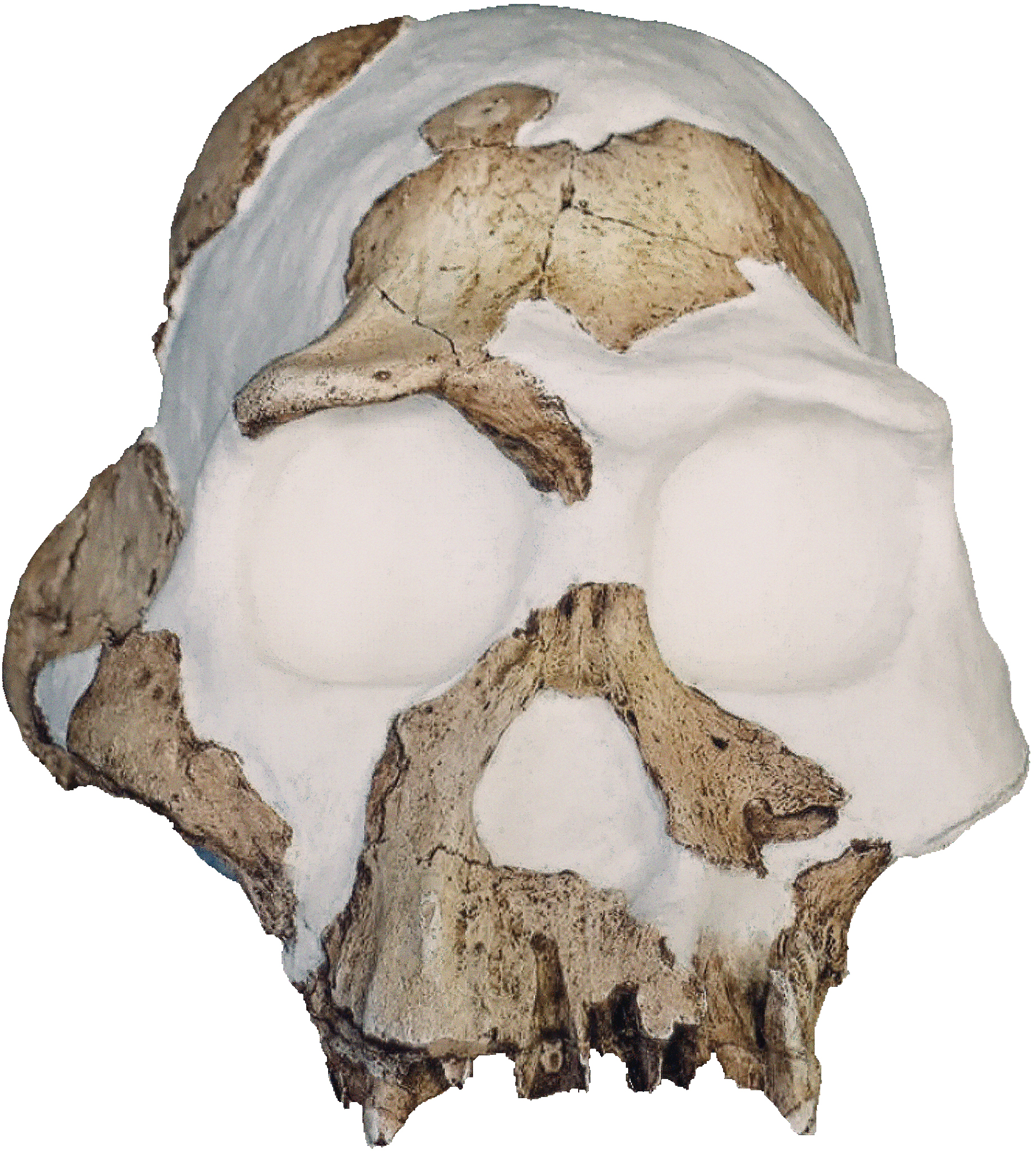Homo gautengensis
Homo sapiens
Hominin traits
Archaeological industry/Technocomplex including art
Period in human prehistory: M = Mesolithic; N = Neolithic; B = Bronze Age; I = Iron Age;
Geological epoch
* Note: Table based past and current research and scientific consensus
Homo gautengensis
Homo sapiens
Hominin traits
Archaeological industry/Technocomplex including art
Aur = Aurignacian; Mag = Magdalenian;
Grav = Gravettian; Sol = Solutrean
Period in human prehistory:
M = Mesolithic; N = Neolithic;
B = Bronze Age; I = Iron Age;
Geological epoch
* Note: Table based past and current research
and scientific consensus
| HOMO GAUTENGENSIS |
 |
| Genus: |
Homo |
| Species: |
Homo gautengensis |
| Time Period: |
1.9 to 0.6 million years ago |
| Characteristics: |
Chewed Plant Material |
| Fossil Evidence: |
Partial Skull, Sterkfontain Cave, Johannesburg, South Africa |
Homo gautengensis is a hominin species recently proposed by biological anthropologist Darren Curnoe in 2010, from analysis of a partial skull found in 1977 at Sterkfontain Cave near Johannesburg, South africa. The species is composed of South African hominin fossils previously attributed to
Homo habilis,
Homo ergaster, or in some cases
Australopithecus, but is argued by Curnoe to be the earliest species in the genus Homo [Curnoe 2010].
Further identification of Homo gautengensis was based on partial skulls, several jaws, teeth and other bones found at various times and cave sites in South Africa’s Cradle of Humankind. The oldest specimens are those from Swartkrans between 1.9 and 1.8 million years ago. The Sterkfontain specimen is dated between 1.8 and 1.5 million years ago, and the Gondolin Cave 1.8 million years ago. The youngest specimens from Swartkrans are dated to sometime between 1.0 and 0.6 million years ago.
According to Curnoe, Homo gautengensis had big teeth suitable for chewing plant material, was small-brained and large-toothed, and was probably an ecological specialist, consuming more vegetable matter than
erectus,
Homo sapiens. and probably
Homo habilis. It apparently produced and used stone tools and may even have made fire, as there is evidence for burnt animal bones associated with Homo gautengensis' remains. Standing just over 0.91 meters tall and weighing about 50 kg, it walked on two feet when on the ground, but probably spent considerable time in trees, perhaps feeding, sleeping and escaping predators. It probably lacked speech and language skills.
Homo gautengensis was a close relative of Homo sapiens but not necessarily a direct ancestor. It would have lived at the same time and in the same place as
Australopithecus sediba, the latter being more primitive [and therefore less likely to be the ancestor of humans]. Indeed, there would have been a number of distinctive, perhaps short-lived, species of proto-humans living in both eastern and southern Africa in the period between 2 and 1 million years ago [Groves 2010].

